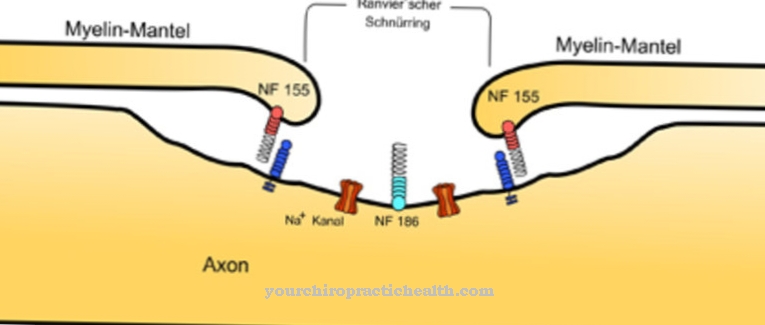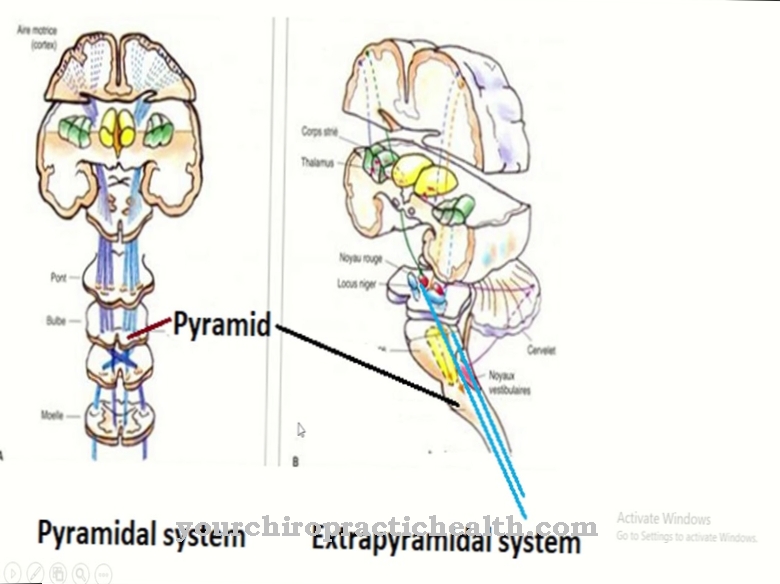The heart is made up of four cavities, two heart chambers and two atria. Of the Atrium is also known as Heart atrium or Atrium cordis designated.
What is the atrium?
The heart is a hollow muscular organ that is responsible for supplying the entire body with blood. The human heart is located in the pericardium in the middle area (mediastinum). In its shape, it resembles a rounded cone.
A person's heart is on average the size of a fist and weighs between 230 and 350 grams, depending on gender. In the rough structure, the heart is formed from two halves. Right heart and left heart each consist of a ventricle and atrium. In a healthy heart, blood always flows into the ventricle through the atrium. From there, depending on the side of the heart, it enters either the large or small bloodstream. If the muscles of the atrium are damaged, atrial flutter or atrial fibrillation can occur.
Anatomy & structure
The fist-sized heart can be divided into a right and a left half of the heart. The two sides of the heart are in turn divided into a chamber and atrium. The chambers are also known as the ventricles and the atria as the artria. The spaces of the heart are separated by the heart septum (septum).
The septum that lies between the two atria is called the atrial septum (septum interatriale). The septum between the two chambers is called the ventricular septum (septum interventriculare) or the ventricular septum. So that the blood can only flow in one direction between the atria and the chambers, there are heart valves between the atria and the chambers and between the chambers and the blood vessels. All flaps are on one level. This level is called the valve level. The right atrium is separated from the right ventricle by the tricuspid valve.
The mitral valve is located between the left atrium and the left ventricle. The wall of the atria consists of three different layers. The inner lining of the heart (endocardium) is located. It is a very thin epithelial layer that lines the entire interior of the heart and also forms the heart valves. The middle layer is the heart muscle layer, the myocardium. The myocardium is responsible for the contraction of the heart. This is also where the excitation system is located, which controls the heart's action. The outer skin of the heart, the epicardium, forms the pericardium.
Function & tasks
The task of the heart and thus also the task of the atria is to supply the body with oxygen-rich blood. The upper and lower vena cava flow into the right atrium. They lead the oxygen-poor (venous) blood from the body's circulation to the heart. The right atrium collects this blood and passes it on to the right ventricle in the atrial systole through the tricuspid valve.
From there, the blood reaches the pulmonary arteries via the pulmonary trunk. In the pulmonary circulation, the blood is enriched with oxygen. It flows through the pulmonary veins into the left atrium. As the atrium fills, the chambers simultaneously expel blood into the arteries. The right and left atria always fill at the same time and always contract at the same time. As soon as the ventricular muscles relax, the valves open. As a result of the pressure drop in the chambers and a slight contraction of the atrium, the blood flows from the left atrium into the left ventricle. From there, in the next systole, the blood gets into the aorta and thus into the great body circulation.
For the heart to contract at all, electrical excitation is required. The electrical excitation of the heart is controlled by a special excitation conduction system with pacemakers. The excitation begins in the sinus node. This is located in the muscles of the right atrium between the right atrial appendage and the superior vena cava. The excitation initially spreads through the two atria. These contract shortly before the chambers. Then the excitation reaches the AV node. This is on the valve level. The excitation is then transmitted via the bundle of His and the tawara thigh to the so-called Purkinje fibers.
Diseases
The conduction of excitation in the heart is regulated by the autonomous excitation system. The topmost pacemaker of the heart, the sinus node in the right atrium, determines the rhythm. Before the impulse reaches the chambers, however, it has to pass the AV node. This filters the impulses and can act as a brake.
Damage to the atrial muscles can lead to disturbances in the formation and conduction of excitation. The damage is mostly caused by coronary heart disease (CHD), in the context of heart failure, heart valve disease or high blood pressure. Increased alcohol consumption and an overactive thyroid are also possible causes of damage to the atrial muscles. With atrial flutter, the atria are stimulated up to 350 times per minute, with atrial fibrillation it is even up to 600 beats per minute. The resulting uncoordinated blood flow causes blood to remain in the atria. This can lead to life-threatening complications.
Blood stasis develops, which can lead to the formation of blood clots. 48 hours after atrial fibrillation, there is therefore an increased risk of thrombosis. If the clot forms in the left heart, it gets into the great body circulation and can thus trigger a stroke or a mesenteric infarction. Thrombi from the right heart enter the lungs and can cause pulmonary embolism there. Despite the impending life-threatening complications, the arrhythmia often goes unnoticed or is only noticeable as a palpitations or a slight palpitations. However, more than 95 percent of the disease cases are easily treatable.












.jpg)



.jpg)










.jpg)
